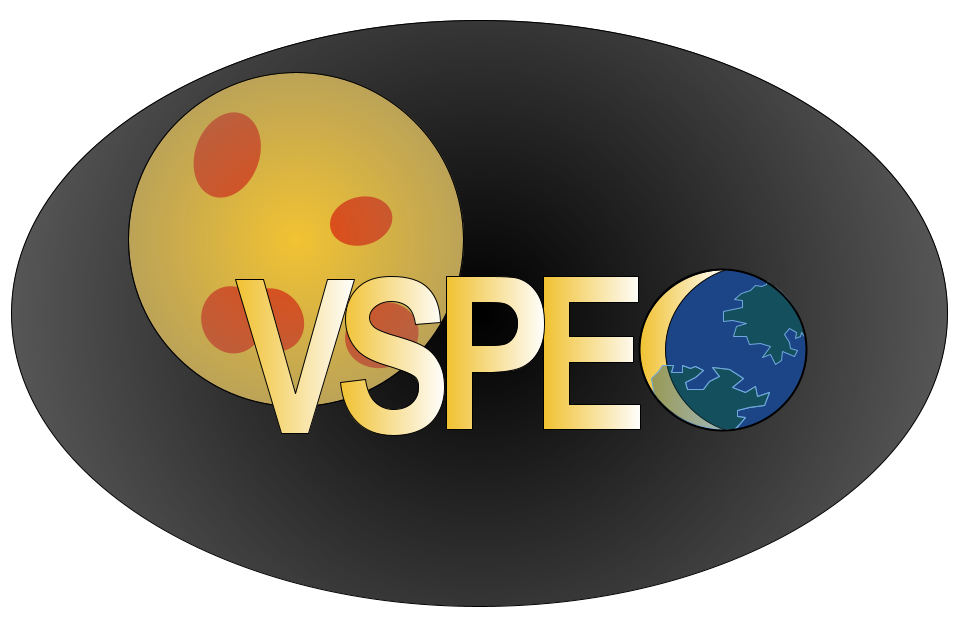PhaseAnalyzer#
- class VSPEC.PhaseAnalyzer(path, fluxunit=Unit('W / (um m2)'))#
Bases:
objectClass to store and analyze VSPEC phase curves
Read all the data produced from a phase VSPEC curve simulation. This class also includes some basic-but-powerfull analysis methods meant to be quickly used to create nice figures.
- Parameters:
path (pathlib.Path or str) – The path to the directory storing all the final output. This is usually
.vspec/.../AllModelSpectraValues/fluxunit (astropy.units.Unit, default=u.Unit('W m-2 um-1')) – Standard unit to use with flux values. This way they are safely converted between
Quantityandfloat
Examples
>>> model = ObservationModel.from_yaml('test.yaml') ... >>> data = PhaseAnalyzer(model.directories['all_model']) >>> plt.plot(data.time, data.lightcurve('total', 0))
Attributes Summary
Covert to an astropy.io.fits.HDUList object
Methods Summary
from_model(model[, fluxunit])Initialize a
PhaseAnalyzerinstance from aVSPECObservationModel.get_layer(var)Get data from layer variable.
lightcurve(source, pixel[, normalize, noise])Produce a lightcurve
spectrum(source, images[, noise])Get a 1D spectrum
to_twocolumn(index, outfile[, fmt, wl])Write data to a two column file that can be used in a retrival.
write_fits(filename)Save
PhaseAnalyzerobject as a .fits file.Attributes Documentation
- fits#
Covert to an astropy.io.fits.HDUList object
- Returns:
Data converted to the .fits format
- Return type:
Methods Documentation
- classmethod from_model(model: ObservationModel, fluxunit=Unit('W / (um m2)'))#
Initialize a
PhaseAnalyzerinstance from aVSPECObservationModel.- Parameters:
model (VSPEC.ObservationModel) – The model to use
fluxunit (astropy.units.Unit, optional) – The flux unit to use. Default:
u.Unit('W m-2 um-1')
Examples
>>> model = ObservationModel.from_yaml('test.yaml') ... >>> data = PhaseAnalyzer.from_model(model) >>> plt.plot(data.time, data.lightcurve('total', 0))
-
get_layer(var: str)
astropy.units.Quantity# Get data from layer variable.
Access the self.layers attribute and return the result as a astropy.units.Quantity object for a single variable.
- lightcurve(source: str, pixel: int | Tuple[int, int], normalize: str | int = 'none', noise: bool | float | int = False)#
Produce a lightcurve
Return the lightcurve of source of the wavelengths described by pixel
- Parameters:
source (str) – Which data array to access.
pixel (int or 2-tuple of int) – Pixel(s) of spectral axis to use when building lightcurve.
normalize (str or int, default='none') – Normalization scheme. If integer, pixel of time axis to normalize the lightcurve to. Otherwise it is a keyword to describe the normalization process:
'none'or'max'noise (bool or float or int, default=False) – Should gaussian noise be added? If float, scale gaussian noise by this parameter.
- Returns:
Lightcurve of the desired source in the desired bandpass
- Return type:
- Raises:
ValueError – If noise is not bool, float, or int
ValueError – If normalize is not recognized or True
- Warns:
RuntimeWarning – If normalize is False
- spectrum(source: str, images: int | Tuple[int, int], noise: bool | float | int = False)#
Get a 1D spectrum
Return the spectrum of a specified source at a single epoch or average over multiple epochs.
- Parameters:
source (str) – Which data array to access. If ‘noise’ is specified, use propagation of error formula to calculate theoretical noise of spectrum.
images (int or 2-tuple of int) – Pixel(s) of time axis to use when building spectrum.
noise (bool or float or int) – Should gaussian noise be added? If float, scale gaussian noise by this parameter.
- Returns:
Spectrum of the desired source over the desired epoch(s)
- Return type:
- Raises:
ValueError – If noise is not bool, float, or int
